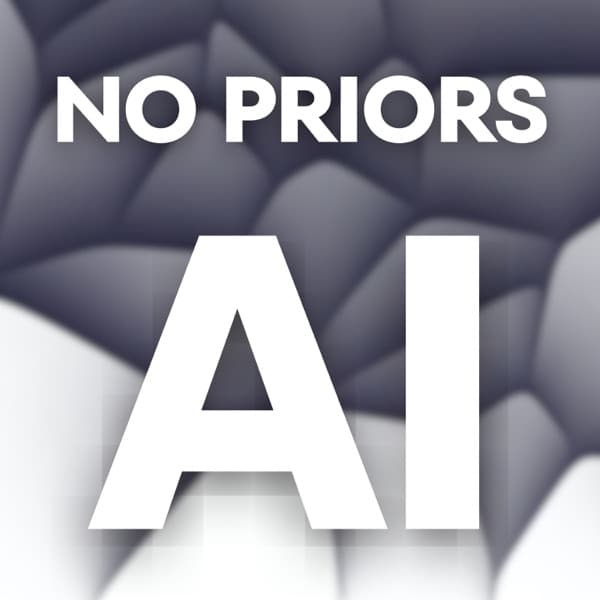Modern Wisdom: The discussion focuses on the importance of sleep, its impact on health, and strategies to improve sleep quality and regularity.
How I Built This with Guy Raz: The podcast episode discusses the journey of Ju Ru and her co-founders in creating Hero Cosmetics and their successful acne treatment product, Mighty Patch, which led to a $630 million acquisition.
a16z Podcast: The discussion focuses on the transformative potential of AI in healthcare and compliance, highlighting the concept of 'super staffing' to address clinician shortages and the use of AI to streamline compliance processes.
Modern Wisdom - #883 - Dr Matthew Walker - The Science Of Perfect Sleep

The conversation delves into the critical aspects of sleep, emphasizing the four key components: quantity, quality, regularity, and timing (QQRT). It highlights the common misconception that time in bed equates to sleep time, stressing the importance of sleep efficiency, which should be at least 85%. The discussion also covers the detrimental effects of stress, anxiety, caffeine, and alcohol on sleep quality. Practical strategies such as setting a regular sleep schedule, reducing screen time before bed, and using sleep tracking devices are recommended to improve sleep. The conversation also explores the evolutionary perspective of sleep, the role of REM sleep in emotional regulation and creativity, and the potential of new technologies like electrical brain stimulation to enhance sleep. Additionally, the impact of sleep on relationships and the benefits of sleeping separately for some couples are discussed. The conversation concludes with insights into the effects of substances like THC, CBD, and melatonin on sleep, and the potential of new sleep technologies.
Key Points:
- Focus on the four key components of sleep: quantity, quality, regularity, and timing (QQRT).
- Improve sleep efficiency by ensuring at least 85% of time in bed is spent sleeping.
- Reduce stress and anxiety through techniques like meditation, breath work, and body scans.
- Limit caffeine and alcohol intake to improve sleep quality and reduce sleep fragmentation.
- Consider new technologies and strategies, such as electrical brain stimulation and separate sleeping arrangements, to enhance sleep quality.
Details:
1. 💇♂️ The Hairy Beginnings
- The speaker humorously attributes 'the best hair among British men' to someone, highlighting the importance of personal style in male identity.
- A midlife crisis is humorously linked to drastic personal changes like hairstyle, reflecting on how men cope with aging.
- The phrase 'total train wreck' humorously depicts chaotic personal experiences, possibly in managing appearance during a midlife crisis.
- The mention of 'no one told me the pandemic was over' humorously underscores the delayed realization or denial about personal grooming needs post-pandemic.
2. 💤 Defining Good Sleep
- Good sleep is defined by several critical factors including sleep duration, quality, and environment. Optimal sleep typically involves 7-9 hours of uninterrupted rest.
- The quality of sleep is as important as the duration; deep sleep stages are crucial for physical recovery and cognitive function.
- Creating a conducive sleep environment—dark, quiet, and cool—can significantly enhance sleep quality.
- Understanding individual sleep cycles can lead to better rest. Tracking sleep patterns can provide insights into personal sleep needs.
- Emerging research suggests that less-known factors such as the timing of sleep and consistency in sleep schedules are vital for improving overall sleep health.
3. 🛌 Sleep's Essential Components
- Good sleep is subjective and varies from person to person, often discussed in personal terms such as 'I slept well' or 'I didn't sleep well.'
- Science and medicine define good sleep through four key components, remembered by the acronym QQRT: Quantity, Quality, Regularity, Timing.
4. ⏰ Understanding Sleep Efficiency
- Focus on four main principles to improve sleep quality, reaching 80% of optimal sleep.
- Sleep quantity is traditionally measured as 7-9 hours for adults, but quality is equally important.
- Good sleep efficiency is at least 85%, indicating the percentage of time in bed spent asleep.
- Very good sleepers achieve 80-90% sleep efficiency, meaning not all time in bed is spent sleeping.
- To achieve the minimum CDC recommendation of 7 hours of sleep, one needs to be in bed for about 8 hours and 15 minutes.
- Practical steps to improve sleep efficiency include maintaining a consistent sleep schedule, creating a restful environment, and limiting screen time before bed.
- Measure sleep efficiency by tracking the time spent asleep versus time spent in bed, aiming for an 85% efficiency rate or higher.
5. 📊 Realizations and Sleep Tracking
- Sleep tracking reveals that eight hours in bed does not equate to eight hours of actual sleep, highlighting a common misconception about sleep duration.
- Devices like Whoop provide valuable insights by differentiating between total time in bed and actual sleep time, offering a more accurate understanding of sleep patterns.
- Sleep efficiency, the percentage of time spent asleep while in bed, is emphasized as crucial. The goal is to achieve a sleep efficiency of 85-90%, which can lead to better sleep quality and overall health.
6. ⚙️ Optimizing Sleep Efficiency
- To improve sleep efficiency, especially if it ranges between 65% and 70%, consider reducing time in bed to 6.5 hours. This strategy involves creating a sleep constraint by limiting time spent in bed to less than the current sleep duration, thereby encouraging the body to adapt and improve sleep quality.
- This approach mirrors focused exercise regimens that limit distractions, thereby forcing the body to maximize the efficiency of the limited sleep opportunity.
- Implementing this strategy requires careful monitoring of sleep patterns and adjustments based on individual needs, considering potential challenges such as sleep deprivation or increased stress.
7. 🧠 Stress, Anxiety, and Sleep Disruption
- Limited gym time leads to inefficient workouts, with only 40% of workout goals achieved initially, highlighting the need for better time management strategies.
- Successive days of increased pressure to maximize gym time result in heightened motivation, suggesting that structured schedules can enhance workout efficiency.
- Minimizing distractions, such as phone use, under pressure improves focus, indicating that reducing external disruptions can lead to better workout outcomes.
- Stress and anxiety from not meeting workout goals can disrupt sleep patterns, emphasizing the importance of setting realistic fitness targets to maintain mental well-being.
8. 🛌 Interventions for Better Sleep
8.1. Enhancing Sleep Efficiency through Retraining
8.2. Addressing Sleep Quality Issues
9. 💕 Sleep and Relationships
- Stress and anxiety are major disruptors of sleep quality, even without the presence of medical sleep disorders.
- The 'wired but tired' phenomenon is prevalent, where individuals feel fatigued yet too anxious to fall asleep, highlighting the paradox of mental exhaustion and alertness.
- High-stress lifestyles disrupt the nervous system's balance, exacerbating sleep issues.
- To improve sleep quality in the absence of sleep disorders, it is crucial to address and manage life stressors effectively.
- Strategies such as cognitive-behavioral therapy, mindfulness, and relaxation techniques can be employed to mitigate anxiety and enhance sleep.
- Personalizing stress management approaches based on individual lifestyles and stressors can lead to better sleep outcomes.
10. ☕ Caffeine's Role in Sleep
- Caffeine stimulates the sympathetic nervous system, increasing heart rate and blood pressure, which can hinder sleep onset by keeping the body in an activated state.
- To promote effective sleep, it's crucial to engage the parasympathetic nervous system, which caffeine can inhibit, making it harder to relax and fall asleep.
- Switching from sympathetic to parasympathetic states is essential for sleep, but caffeine consumption can delay this transition, affecting overall sleep quality.
- Managing caffeine intake, especially close to bedtime, can help facilitate the necessary shift to the parasympathetic system for better sleep.
- Understanding caffeine's impact on the nervous system can aid in developing strategies to improve sleep hygiene and address sleep disturbances.
11. 🍷 Alcohol's Impact on Sleep
- The HPA axis, known as the stress axis, involves the release of adrenaline and cortisol, which can lead to a feeling of being wired even after tiring activities.
- Alcohol consumption can increase cortisol levels, which is a stress hormone that stimulates the heart rate, preventing sleep despite feelings of exhaustion.
- Research indicates that alcohol-induced activation of the HPA axis can disrupt sleep patterns, leading to less restorative sleep and increased wakefulness during the night.
- Understanding the interaction between alcohol, the HPA axis, and cortisol levels can inform strategies to mitigate sleep disturbances related to alcohol use.
12. 🌱 THC, CBD, and Sleep
- Reflection often occurs at night, leading to increased anxiety and rumination, negatively impacting sleep quality.
- Anxiety and stress in modern life are exacerbated when reflection is done at night, causing further sleep disturbances.
- THC and CBD have been studied for their potential to improve sleep by reducing anxiety and promoting relaxation.
- THC is known to have sedative effects that may help in falling asleep faster, although it might affect REM sleep cycles.
- CBD is noted for its anxiolytic properties, which can help in reducing nighttime anxiety and improving overall sleep quality without the psychoactive effects of THC.
- Studies have shown that a combination of THC and CBD can be effective in addressing sleep disorders by balancing each other's effects.
13. 💊 The Role of Melatonin
- Lack of sleep causes mental disruption and physiological consequences, emphasizing the need for effective interventions.
- Addressing and managing stressors is crucial for improving sleep quality and overall health.
- Interventions should target both psychological and physiological aspects of sleep disruption, such as cognitive-behavioral therapy (CBT) for insomnia and melatonin supplementation.
- Implementing personalized sleep hygiene practices can significantly enhance sleep quality.
- Use of technology, like sleep tracking apps, helps in understanding sleep patterns and identifying needed adjustments.
14. 🔬 Emerging Sleep Technologies
14.1. Catharsis and Its Impact on Sleep
14.2. Meditation as a Tool for Improved Sleep
15. 💡 Innovations in Sleep Science
15.1. Meditation for Sleep Enhancement
15.2. Breath Work Techniques for Better Sleep
16. 🧠 The Mysteries of Dreaming
- Practicing body relaxation by focusing on different body parts, such as the neck and forehead, can significantly reduce tension, leading to improved sleep quality.
- Engaging in a mental walk with hyper detail improves mindfulness. For instance, recalling a walk with a dog by focusing on specific actions like choosing a leash and opening doors enhances mental clarity and awareness.
- Across various relaxation techniques, the common element is the emphasis on heightened awareness and detailed mental focus. This approach aids in stress reduction and promotes better mental health.
17. 🔍 Exploring Sleep's Purpose
17.1. Breathing and Body Scans Techniques
17.2. Understanding Sleep as a Passive Process
17.3. Mental Distraction Techniques
How I Built This with Guy Raz - Hero Cosmetics: Ju Rhyu and Dwight Lee

Ju Ru, inspired by the use of hydrocolloid patches in Korea for acne treatment, co-founded Hero Cosmetics with Dwight and Andy Lee. They launched the Mighty Patch, a product designed to treat acne by absorbing moisture from pimples, on Amazon in 2017. The product quickly gained popularity due to its effectiveness and strategic marketing, including influencer partnerships and PR efforts. Despite initial challenges, such as Ju's hesitation to launch and supply chain issues during COVID-19, the company grew rapidly. They expanded their product line and retail presence, eventually leading to a $630 million acquisition by Church & Dwight in 2022. The founders emphasized the importance of hard work, strategic partnerships, and a bit of luck in their success.
Key Points:
- Hero Cosmetics was founded by Ju Ru and co-founders after identifying a market gap for acne treatment patches in the U.S.
- The Mighty Patch, their flagship product, uses hydrocolloid technology to treat acne effectively, gaining traction through Amazon and influencer marketing.
- Despite initial challenges, including supply chain issues during COVID-19, the company expanded its product line and retail presence.
- Strategic decisions, such as focusing on patch products and leveraging PR, were crucial to their growth.
- The company was acquired by Church & Dwight for $630 million, highlighting the success of their business model and market strategy.
Details:
1. 🎧 Wondery Plus & Early Access
- Wondery Plus subscribers have early access to content, listening to 'How I Built This' ahead of others.
- Wondery Plus offers an ad-free experience, enhancing user satisfaction.
- Subscription can be accessed through the Wondery app or Apple Podcasts, providing flexibility in how users engage with content.
2. 💰 Money Management with YNAB
- YNAB (You Need A Budget) facilitates effective money management by encouraging users to assign specific roles to every dollar they earn, an approach that aligns expenditures with personal values and priorities.
- A significant feature of YNAB is its ability to reduce financial stress by helping users anticipate expenses, track spending, and save more efficiently, as demonstrated by user testimonials indicating improved financial control and reduced debt.
- Listeners of How I Built This are offered an exclusive three-month free trial of YNAB without requiring a credit card, available at www.ynab.com/built, allowing potential users to experience the benefits firsthand.
- YNAB's methodology reportedly enhances financial literacy by providing tools that promote proactive budgeting, which has led some users to report a significant increase in savings and better management of unexpected expenses.
3. 💍 Simplifying Weddings with Zola
- Zola provides a comprehensive wedding planning platform that includes venue and vendor discovery, matching users with their ideal wedding team.
- The platform offers integrated tools for managing save-the-dates, creating wedding websites, and an easy-to-use registry, consolidating all wedding planning needs in one place.
4. 🔊 Audible's Top 2024 Picks
- Audible's curated list includes top audiobooks, podcasts, and originals in various genres such as memoirs, sci-fi, mysteries, and thrillers.
- Highlighted productions include a new full-cast version of George Orwell's 1984, Supreme Court Justice Katonji Brown Jackson's memoir, and The Women by Kristen Hanna.
- Percival Everett's work, James, and Amy Tintera's Listen for the Lie, a thrilling whodunit, are also featured.
- Listeners can explore these top picks at audible.com slash wonderypod.
5. 🛠 Ju's Korean-American Influence & Entrepreneurial Beginnings
- Ju Ru founded the acne treatment company Mighty Patches, drawing inspiration from her personal experiences and cultural background.
- The company achieved significant growth, reaching a valuation of $630 million within five years, showcasing the effectiveness of her business strategy.
- Ju faced initial challenges, including market competition and consumer skepticism, but overcame these through innovative marketing and product quality.
- She leveraged her Korean-American heritage, utilizing insights into skincare trends and consumer needs to differentiate her products.
6. 🌟 Creating Hero Cosmetics: From Idea to Reality
7. 📈 Amazon Launch & Retail Expansion Strategy
- The company positioned Amazon as a digital store shelf, designing product packaging with a medical and playful aesthetic to attract both genders.
- Launched on Amazon in September 2017, leveraging ads, influencer marketing, and a strategic feature in 'Into the Gloss', resulting in a sales spike.
- Sold out 10,000 units within 90 days due to a less saturated pimple patch market.
- Implemented a DIY PR strategy, sending 20 emails a month to editors, reducing reliance on costly digital ads.
- Marketed as an American brand to build trust with a local audience, rather than relying on the K-beauty trend.
8. 🏬 Navigating Retail Challenges & Building Brand Awareness
8.1. Initial Retail Approach
8.2. Anthropologie Partnership
8.3. Product and Packaging Adaptations
8.4. Transition from Consulting
8.5. Specialty Retail Expansion and Financials
8.6. Marketing and Customer Engagement
8.7. Cultural Adoption and Brand Messaging
9. 💡 Strategic Growth During COVID
9.1. Expansion Strategy and Product Focus
9.2. Remote Work Adaptation
9.3. Retail Expansion and Marketing
9.4. Financial Growth and Challenges
10. 💼 Investment Decisions & Acquisition Discussions
- Term sheets during COVID lockdown were unfavorable, with some firms dropping out to focus on existing portfolio companies.
- The term sheets offered were considered onerous and founder-unfriendly, leading to a decision not to accept them.
- The company remained stable during COVID by focusing on essential retail channels like Amazon and Target, avoiding major business dips.
- Supply chain challenges were managed by increasing inventory from one month to six months, a risky strategy that paid off as sales continued.
- Re-engagement with a previously interested investor led to a fair deal in October 2020, after initial rejection due to the company not being ready.
- The goal for acquisition attractiveness was set at $100 million in sales, which was achieved by 2021.
- The company began serious acquisition talks in 2022, focusing on cultural fit with potential buyers like Church and Dwight.
- The acquisition aimed to ensure the brand's longevity, with a focus on finding a 'forever home' for the brand beyond the original founders.
11. 🎉 Successful Acquisition & Future of Hero Cosmetics
11.1. Acquisition Details and Strategic Plans
11.2. Transition and Evolving Roles of Founders
11.3. Success Factors and Marketing Strategy
11.4. Future Plans Post-Acquisition
12. 🔚 Final Thoughts & Next Episode Teaser
- Prime members can listen ad-free on Amazon Music, providing a seamless experience for subscribers.
- Listeners are prompted to fill out a short survey at wondery.com/survey, indicating a focus on audience feedback and improvement.
- The teaser for the next episode introduces a true crime story set in Hollywood, highlighting the mysterious death of TV producer Roy Radin in 1983, with connections to drug dealing and the movie industry.
- The upcoming show, Hollywood and Crime: The Cotton Club Murder, is available ad-free and early on Wondery Plus, emphasizing exclusive content access for subscribers.
a16z Podcast - Super Staffing Healthcare, Codifying Compliance, & Scaling Services

The conversation explores how AI can revolutionize healthcare by addressing the critical shortage of clinical staff through 'super staffing.' This involves using AI to enhance the productivity of existing clinicians and automate administrative tasks, potentially doubling the capacity of the current workforce. Examples include AI co-pilots that assist in decision-making and autonomous agents handling non-clinical tasks. The discussion also covers the rapid adoption of AI in healthcare, driven by the lack of legacy systems, allowing for a leapfrog effect in technology integration. In compliance, AI is seen as a tool to transform regulatory processes into code, reducing the burden on companies and enabling faster, more efficient compliance checks. This shift could significantly lower costs and open up opportunities for new entrants in heavily regulated industries like banking and insurance. The potential for AI to automate roles in traditional service industries is also highlighted, suggesting a future where these sectors can achieve higher margins and scalability.
Key Points:
- AI can address healthcare staffing shortages by enhancing clinician productivity and automating administrative tasks, potentially doubling workforce capacity.
- Rapid AI adoption in healthcare is facilitated by the absence of legacy systems, allowing for a leapfrog effect in technology integration.
- AI can transform compliance processes into code, reducing costs and enabling faster, more efficient regulatory checks.
- The use of AI in compliance can lower barriers for new entrants in regulated industries, fostering innovation and competition.
- AI's potential to automate roles in traditional service industries could lead to higher margins and scalability.
Details:
1. 🚑 Healthcare Workforce Exodus
1.1. Clinician Workforce Departure
1.2. Banking Compliance Staffing Trends
1.3. Strategic Implications for Workforce Management
2. 🏦 Compliance Overload in Banking
- Net margins increased from 5% to 30%, indicating a significant improvement in profitability.
- Compliance costs have risen by 20% due to increasing regulatory requirements, impacting operational budgets.
- The implementation of advanced compliance software reduced manual compliance checking time by 40%, enhancing efficiency.
- Banks have noted a 25% increase in audit frequency, necessitating more robust compliance frameworks.
- Customer trust improved by 15% after banks adopted transparent compliance policies, reflecting positively on brand reputation.
3. 📈 Tech Adoption Surge in Healthcare
- The healthcare industry is experiencing an unprecedented rate of technology adoption, driven by innovations such as AI, telemedicine, and electronic health records. This surge is transforming patient care and operational efficiency.
- Historically, technology adoption in healthcare was slower due to regulatory barriers and high costs, but recent advancements have accelerated integration.
- Case studies show that hospitals implementing telemedicine have reduced patient wait times by 30%, while AI-driven diagnostics increase accuracy by 25%.
- Despite the rapid adoption, challenges such as data privacy concerns and the need for staff training remain significant hurdles to address.
4. 🏗️ Challenges in Scaling Businesses
4.1. Developing Acquisition Strategies
4.2. Timeframe for Strategic Planning
5. 💡 Why You Should Care
- Understanding the significance of this topic can lead to better decision-making.
- Increased awareness can result in more effective personal and professional strategies.
- Awareness of these insights can provide a competitive advantage in various fields.
6. 🔮 Reflecting on Technological Milestones
- The Human Genome Project was completed 22 years ago, marking a significant milestone in genetic research.
- Gmail has been operational for 21 years, revolutionizing how we approach email communication.
- Twitter has been a platform for 19 years, influencing social media interactions globally.
- Instagram, now 15 years old, has transformed visual content sharing and social networking.
- The App Store, launched 17 years ago with just 500 apps, now hosts millions of apps, generating over a trillion dollars for developers.
7. 🌐 Big Ideas for 2025
- Maritime Exploration: By 2025, advancements in technology will usher in a new era of maritime exploration, focusing on deeper and more comprehensive marine studies.
- Programming Medicine: Breakthroughs in medical technology are anticipated, with a focus on personalized medicine driven by advanced programming.
- AI Evolution: AI is expected to continually evolve, impacting sectors with never-ending innovation cycles and strategic implementations.
- Accessible Pharmaceuticals: Efforts will be made to democratize access to cutting-edge pharmaceuticals, making them available globally.
- Hardware-Software Integration: The intersection of hardware and software will be crucial, necessitating integrated technology solutions for future advancements.
- AI Market Competition: A strategic battle for AI dominance will continue between large companies and startups, shaping the tech industry landscape.
- Geopolitical AI Concerns: Countries will increasingly consider AI's impact on national sovereignty, reflecting the geopolitical challenges posed by technology.
8. 💊 AI's Transformative Potential in Healthcare
- AI's integration into healthcare has led to improved diagnostics and personalized treatment plans, increasing efficiency and patient outcomes.
- In fintech, AI has enabled automated fraud detection and enhanced customer service through chatbots, resulting in cost savings and better user experiences.
- Traditional service industries are utilizing AI for process automation and customer engagement, leading to streamlined operations and increased satisfaction.
9. 🩺 Addressing Healthcare's Staffing Crisis
- The healthcare industry is experiencing significant staffing shortages, which severely impact service delivery and operational efficiency.
- AI is being explored as a potential solution to mitigate inefficiencies and enhance job satisfaction among healthcare professionals.
- The healthcare sector is characterized as slow, expensive, and lacking agility, indicating an urgent need for technological integration to improve service delivery.
- Examples of AI applications in healthcare could include automating routine tasks, which can free up medical staff to focus on patient care, potentially improving job satisfaction and reducing burnout.
- A comprehensive approach involving AI could shorten the time for administrative processes, allowing healthcare professionals to devote more time to patient interactions.
10. 📉 Shortage & Complexity in Healthcare Demand
- The healthcare sector faces a critical shortage of hundreds of thousands of doctors and nurses, unable to meet the projected demand for clinical services over the next five years.
- Julie Yu introduces 'super staffing,' a strategic approach to align clinical supply with patient demand in healthcare.
- AI-driven specialist models are discussed as a key solution to address the shortage and complexity in healthcare demand, with potential to improve efficiency and service delivery.
11. 📊 Evaluating the Healthcare Shortage
- The chronic disease burden in America is increasing, leading to more complex healthcare demands.
- The number of diseases an individual has and the medications they require are both rising.
- This complexity contributes to a shortage of healthcare labor relative to the growing demand.
- The shortage impacts patient care by increasing wait times and reducing the quality of healthcare services.
- To address these challenges, strategies such as enhancing healthcare labor training, improving healthcare delivery efficiency, and leveraging technology are being considered.
12. 🛑 Structural Barriers to Healthcare Supply
12.1. Doctor and Nurse Shortages
12.2. Redefining 'Shortage' in Healthcare
13. 🏥 Burnout & Retention in Healthcare
- The healthcare industry faces structural and regulatory constraints, limiting the supply of new doctors due to education and accreditation restrictions.
- Federal funding limits the establishment of new medical schools, contributing to the supply shortage.
- State-level licensure restricts the number of practicing doctors, with renewals required every few years.
- 45% of doctors are over the age of 60, indicating a looming shortage as they retire, termed a 'silver tsunami.'
- Burnout has intensified due to the pandemic, increasing pressure on frontline healthcare staff.
- Potential solutions include increasing federal funding for medical schools, streamlining state licensure processes, and implementing wellness programs for healthcare workers to mitigate burnout.
- The impact of burnout and shortages directly affects patient care, leading to longer wait times and reduced access to healthcare services.
14. 💼 Patient Impact: Delays & Costs
14.1. Burnout and Workforce Impact
14.2. Access Issues in High-Density Areas
15. 🔍 Patient Experience and Technology's Role
- The average wait time for a specialist appointment nationwide is approximately 50 days, with a range from 27 to 90 days across different locations.
- No-show rates for appointments significantly increase after a wait time of 14 days, resulting in unused time slots and inefficiencies.
- Delayed medical attention due to long waits leads to higher emergency room visits, which are substantially more costly than regular physician visits.
- Limited access to doctors encourages patients to resort to online self-diagnosis, risking misinformation and potential health complications.
- Implementing technology can enhance patient experience by reducing wait times and improving access to healthcare services, potentially through solutions like telemedicine and AI scheduling systems.
16. 🤖 AI Enhancements in Healthcare Efficiency
- Technology can curb healthcare issues by increasing the productivity of existing clinicians rather than expanding the workforce.
- Training doctors takes 7 to 10 years and is costly, highlighting the need for technology to enhance current resources.
- AI co-pilots can reduce decision-making time for doctors at the point of care, increasing efficiency and maintaining decision quality.
- Super staffing through AI and autonomous agents can augment the current labor pool, allowing clinicians to focus on patient care.
- Up to 50% of a clinician's time is spent on non-clinical tasks; AI can handle these, potentially doubling clinical capacity.
17. 📝 AI Tools Revolutionizing Healthcare
17.1. Rapid Adoption of AI in Healthcare
17.2. AI in Patient Interaction
17.3. AI in Administrative Efficiency
18. 🏥 AI's Economic Impact on Healthcare Budgets
18.1. AI in Healthcare Communication
18.2. AI Budgeting Strategies in Healthcare
19. 🔍 AI Models & Regulatory Frameworks
19.1. Rapid Adoption of AI Products
19.2. Integration Challenges
19.3. Impact of AI on Healthcare
19.4. Specialist AI Models in Healthcare
19.5. Regulatory Challenges
20. 📜 Navigating AI Regulations in Healthcare
20.1. Regulatory Framework and AI Models
20.2. Reimbursement and Insurance
20.3. Case Studies and Examples
21. 🌐 AI's Role in Reshaping Healthcare Systems
- AI enables national scale capacity in healthcare by addressing state-by-state licensure constraints, allowing doctors to serve patients beyond their geographic limitations.
- Asynchronous medicine, facilitated by AI, transforms traditional doctor visits by enabling 24/7 communication between patients and doctors, reducing friction in healthcare interactions.
- AI-powered clinic models allow doctors to be hyper-responsive, using AI as co-pilots to provide continuous, on-demand care.
- The introduction of AI is dynamically changing medical training and the development of new specialties that were not previously available.
- The current rate of technology adoption in healthcare IT is unprecedented, breaking barriers between problem spaces and solutions.
- AI implementation faces challenges such as data privacy concerns, integration with existing systems, and ensuring equitable access to technology.
- Case studies, such as the use of AI in remote diagnostics and personalized treatment plans, demonstrate significant improvements in patient outcomes and operational efficiencies.
22. 🧠 AI and Healthcare Cost Dynamics
- AI adoption in healthcare is accelerating, with roles like 'super staff' and new budget allocations driving this change.
- AI tools are being purchased from different budgets and by new types of buyers, indicating a shift in traditional healthcare purchasing patterns.
- The implementation of AI is expected to unlock latent capacity, increasing the supply side efficiency within the healthcare market.
- AI is transforming the landscape of healthcare buyers and budgets, leading to significant operational and financial changes.
23. 📋 Compliance Challenges Across Industries
- Industries such as banking, insurance, and healthcare invest heavily in compliance, dedicating significant resources including time and financial expenditure.
- Banking and insurance face complex regulatory landscapes with tens of thousands of pages of regulations; SBA lending documents alone exceed 1,000 pages.
- Angela Strange of A16Z anticipates a shift by 2025 where regulation will transform into code, indicating a move towards technology-driven compliance solutions.
- Regulation imposes substantial costs on banks, insurance companies, and healthcare providers, and significantly hinders market entry and innovation.
- The persistent accumulation of regulations without corresponding removal increases compliance burdens, suggesting AI's potential to streamline processes and reduce complexity.
- AI can contribute to reducing costs and improving efficiency by automating the interpretation and implementation of regulatory requirements, potentially aiding new entrants in overcoming compliance barriers.
24. 🔗 AI's Role in Simplifying Compliance
24.1. 🔗 AI's Role in Simplifying Compliance
24.2. Historical Context and Challenges in Compliance
24.3. Example: Anti-Money Laundering Compliance
24.4. Case Study: TD Bank's Compliance Challenge
24.5. Financial Impact of Compliance Challenges
25. 👨💼 Workforce and Compliance in Finance
25.1. Workforce Challenges in Finance Compliance
25.2. Technological Solutions in Compliance
26. 🧠 LLMs in Compliance: Judgment & Efficiency
26.1. Managing LLM Hallucinations in Compliance
26.2. Market Expansion and Integration of AI in Compliance Tools
27. 🚪 AI Market Penetration in Compliance
27.1. Advancements in AI Tools
27.2. Market Adoption and Challenges
28. 💼 Consumer Impact of Regulatory Simplification
28.1. Impact of Technical Solutions on Compliance Officers
28.2. Market Disruption by New Entrants
28.3. Regulatory Barriers and Market Entry
28.4. Opportunities in Systems of Record and Small Business Lending
28.5. Strategic Opportunities in Workforce Allocation
28.6. Consumer Relevance of Regulatory Simplification
29. 🔄 AI Disrupting Traditional Service Industries
29.1. Growth Trend
29.2. AI Automation
29.3. Leveraging LLMs
29.4. Organic Growth and Technology
30. 📈 AI-Driven Growth in Business Models
- Automation in services is enabling businesses to adopt better models for acquiring small businesses.
- Large Language Models (LLMs) are being rapidly adopted across industries, enhancing both horizontal and vertical applications.
- Investment in 11x focuses on automating the sales function, particularly the role of a Sales Development Representative (SDR), indicating high demand for this technology.
- In the freight industry, companies like Happy Robot are automating call center operations, improving efficiency in booking loads and managing new carriers.
- In healthcare, companies like Tenor are automating back office processes in small healthcare practices, showcasing AI's impact on operational efficiency.
- AI-driven applications are experiencing unprecedented growth rates, surpassing previous industry benchmarks.
31. 📊 Framework for Industry Disruption with AI
- Identifying opportunities for AI disruption involves targeting industries with extensive manual processes, such as voice or paper-based tasks, where unstructured data requires synthesis and structured output generation.
- Large Language Models (LLMs) are particularly effective for tasks involving unstructured data, making them suitable for applications in call centers, healthcare, insurance, and sales.
- The 'messy inbox problem' refers to scenarios where numerous documents need to be organized and inputted into databases, often handled by internal teams.
- Industries with significant business process outsourcing (BPO) spend, such as consulting firms, present opportunities for AI integration to streamline operations.
32. 💼 Rethinking Private Equity with AI
- Traditional private equity involves buying companies using a mix of equity and debt, often with a significant amount of debt.
- Private equity aims to improve earnings in a short period, typically holding companies for three to five years before selling.
- The focus is on optimizing IRR (Internal Rate of Return) rather than maximizing company growth potential.
- AI can revolutionize private equity by enhancing due diligence, identifying growth opportunities, and optimizing operational efficiencies.
- AI-driven analytics can lead to better decision-making and potentially higher returns on investment.
33. 🔄 Transformative AI Strategies in Services
- Traditional private equity focuses on immediate financial gains through cost-cutting and strategic acquisitions, often at the expense of long-term growth.
- Two prevalent methods for achieving these gains are reducing operational costs, such as workforce downsizing, and acquiring companies at favorable multiples for financial leverage.
- In contrast, a new transformative strategy involves embedding technology and AI into service companies, prioritizing sustainable business growth over immediate returns.
- This innovative approach necessitates substantial initial investments in technology and a paradigm shift from short-term to long-term financial planning.
- Examples of companies like Danaher and Tyler Technologies illustrate successful long-term transformation strategies, albeit not being AI-native.
- For true AI-native transformation, companies must leverage specific AI technologies such as machine learning, natural language processing, and predictive analytics to drive service innovation and efficiency.
34. 🏢 AI's Role in Small Business Operations
- Small insurance agencies, such as 'Steph's Insurance Agency' in Columbia, Missouri, typically generate $3-$4 million in gross written premium, resulting in approximately $500,000 in revenue with slim profit margins.
- These agencies often maintain small teams, usually comprising one to three back office staff and a Customer Service Manager (CSM) who handles new business.
- AI technology can significantly enhance operational efficiency by automating data collection and processing, thus reducing dependence on manual paperwork and outdated legacy systems.
- For example, by implementing AI, 'Steph's Insurance Agency' could streamline its back-office procedures, potentially increasing profit margins by cutting down on time and resources spent on administrative tasks.
- AI-driven processes can transform the 'painful' back-office operations, freeing up staff to focus on client engagement and business development, ultimately boosting overall business performance.
35. 🛠️ Selling AI Solutions to Small Businesses
- Automation can reduce manual paperwork, saving 5-15% of a business's net margin, and potentially increase net margins from 5% to 30%.
- Deep integration into core systems, especially in legacy industries like insurance, is crucial for effective automation.
- AI agents can manage customer interactions, resolving issues in real-time and reducing staffing needs by up to 50%.
- Increased margins from automation provide extra cash flow for business expansion, such as acquiring other companies.
- The potential of repurposing technology across similar small businesses by integrating with existing systems is significant.
- Creating vertical-specific solutions that integrate with industry-specific systems is a key opportunity.
- Small businesses, especially in non-tech-savvy regions, face challenges in adopting new technologies, requiring tailored solutions.
- To overcome integration challenges, businesses should focus on phased implementation and staff training to ensure smooth transitions.
36. 💡 Strategic Acquisitions with AI Integration
- Acquiring businesses allows for fundamental shifts in operations, offering a new cadence and workflow.
- Capital efficiency is key; small businesses can be acquired without significant expense, impacting earnings positively.
- Initial acquisitions may not generate immediate cash flow but create a flywheel effect for future acquisitions.
- Unlike traditional private equity, which relies on debt and financial engineering, this strategy compounds investments over time.
- The margin changes through this approach can be significant, shifting from 5% to as high as 50% in some cases.
- Acquisitions are more valuable when businesses are worth more to the buyer than to others, enabling unique strategic advantages.
- AI integration in acquisitions can optimize operational efficiency, enhance data analytics for better decision-making, and personalize customer interactions.
- Case Study: A tech firm increased its operational margin from 10% to 45% within two years post-acquisition by leveraging AI-driven customer insights.
- Example: A company reduced its product development cycle from 6 months to 8 weeks after acquiring a startup with advanced AI capabilities.
37. ⚙️ Organic vs Inorganic Growth with AI
- AI-driven strategies can boost earnings growth from a traditional 5% to between 5% and 20%, offering a significant advantage over conventional methods.
- AI enhances business value by improving short-term earnings without major operational overhauls, making it a valuable tool for growth.
- Inorganic growth strategies focus on acquiring localized customer bases and improving service operations, which AI can optimize by freeing local staff to concentrate on business development.
- Traditional businesses like insurance, real estate, and law can struggle with organic growth due to their localized operations, but AI offers tools to overcome these limitations.
- Inorganic growth benefits from AI by enhancing the scalability and efficiency of operations while leveraging existing local trust and reputation.
38. 🔍 Challenges in AI-Driven Business Models
- Net new organic growth rate is impacted, suggesting a clever approach.
- Enterprise software companies in public markets may expect 18-24 month paybacks on customer logos; similarly, small businesses should aim for strong paybacks on new acquisitions.
- Treat new business acquisition like an enterprise software sales motion rather than traditional financial engineering.
- Operational challenges include scaling human-driven businesses and dealing with legacy systems.
- Process mapping and understanding legacy systems are crucial to drive incremental value.
- Legacy services businesses often require a blend of automation (bits) and human involvement (atoms).
- AI has limitations; it can't fully automate businesses, particularly in sectors like insurance claims handling.
- Identifying the right mix of technology and human processes is essential to solve implementation challenges.
39. 💡 Traits of Successful AI Entrepreneurs
39.1. Key Traits of AI Entrepreneurs
39.2. Strategies for Success
40. 🔮 Preparing for the Future with Big Ideas
- The segment emphasizes the importance of preparing for 2025 with innovative concepts.
- The A16Z crypto team has presented 14 significant ideas aimed at shaping the future.
- These ideas likely focus on leveraging technological advancements to drive new opportunities.
- While specific examples are not detailed, the initiative reflects a strategic move towards future-proofing and embracing digital transformation.
- Understanding these ideas involves considering their potential impact on industries, growth, and adaptation to future trends.
Included Channels
 Lex Fridman Podcast
Lex Fridman Podcast All-In with Chamath, Jason, Sacks & Friedberg
All-In with Chamath, Jason, Sacks & Friedberg Modern Wisdom
Modern Wisdom Greymatter
Greymatter In Depth
In Depth a16z Podcast
a16z Podcast Lenny's Podcast: Product | Growth | Career
Lenny's Podcast: Product | Growth | Career Lightcone Podcast
Lightcone Podcast No Priors AI
No Priors AI The Twenty Minute VC (20VC): Venture Capital | Startup Funding | The Pitch
The Twenty Minute VC (20VC): Venture Capital | Startup Funding | The Pitch How I Built This with Guy Raz
How I Built This with Guy Raz BG2Pod with Brad Gerstner and Bill Gurley
BG2Pod with Brad Gerstner and Bill Gurley Latent Space: The AI Engineer Podcast
Latent Space: The AI Engineer Podcast






